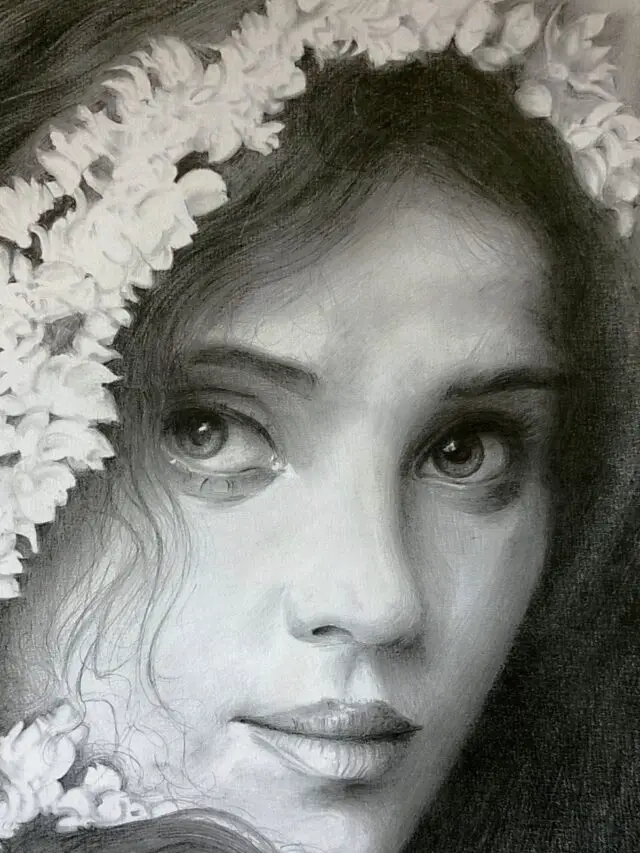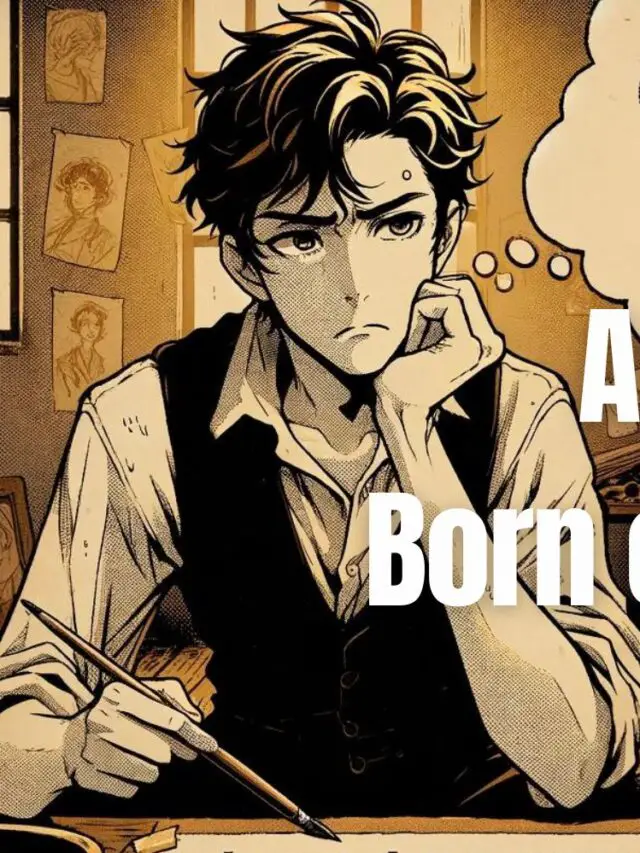Have you ever been mesmerized by a work of art, captivated by the absence of detail? This is the power of Negative Space in Art. Negative or white space is the area that surrounds and enhances a piece’s main subject, which can be either empty or contain subtle details. As an enthusiast or student in the visual arts, understanding how to use negative space will enrich your appreciation for artwork and its purposeful composition.
This article will explain how to enhance your art using negative space. We’ll break down each type of creative space and how to balance positive and negative areas for a compelling final product. Additionally, we’ll dive into understanding why negative space is so important in creating stunning visual artwork. Whether you’re just beginning or an experienced artist looking for new techniques, this post has something for you.
Table of Contents
What is Negative Space in Art?
Negative space refers to the area in and around the main focus of the artwork, the space around the shape, and how it interacts with the positive space. Negative space is the free area around and between shapes, lines, or any other object within an artwork. Artists use negative space to craft balance, proportion, and visual drama in their compositions by skewing the ratio of positive (filled) textures to negative (empty). They can guide a viewer’s gaze and accentuate what truly matters in their piece.
Negative space can be an invaluable tool to surface and define the focus of a design, frame objects, and provide visual balance. Despite its straightforwardness, it is often neglected, but with its use, artworks are enriched by utilizing the empty areas surrounding them.
What are the Differences between Positive and Negative Space?
The following are the differences between Negative and Positive Space in Art.
| Positive Space | Negative Space |
|---|---|
| Refers to objects, shapes, and figures within an artwork that draws viewers’ attention toward it. | Refers to the empty spaces around and between those elements that enhance other parts of artwork by providing a foil or contrast to them. |
| Usually filled with color or texture and stands out more than negative space. | Is emptier and less colorful than positive space, often fading into the background. |
| Helps create depth and perspective in a painting or image. | Adds focus, frames objects, and adds visual balance. |
| Gives life to artwork by playing off the surrounding shapes and forms allows. | Allows viewers to interpret artworks in their way by leaving room for imagination. |
| Draws the attention of viewers towards it. | Enhances other parts of artwork by providing a foil or contrast to them. |
| Is typically the focal point of an artwork. | Can be used to create a sense of depth or distance in an artwork |
Why is Negative Space so Important in Art?
Artists can create striking visual compositions by carefully utilizing empty spaces, resulting in a perfect balance between positive and negative shapes. Some of the key reasons why artists rely on blank or negative space:
Enhancing Composition
Negative space can dramatically enhance the balance and composition of a drawing or painting. Using this technique, an artist can guide their viewer’s eye through the artwork with a captivating rhythm that adds to its visual charm. For instance, one could use negative space to create an iconic silhouette, such as two human figures or a vase.
Creating Illusion
Negative space can be employed to create the illusion of depth in a work of art. Positioning negative space around an object makes it possible to give the impression that it lies at a certain distance from other elements within the piece, thus creating a mesmerizing three-dimensional effect.
Providing Visual Balance
Negative space is an excellent technique for harmoniously unifying positive and negative shapes in a work of art. By appropriating the visual weight of the positive areas, this balance can be achieved effortlessly with empty spaces between or around figures. With this balance comes a feeling of unity within your artwork!
Drawing Attention
Negative space can be used to draw attention to the focal point of a piece of art. This is done by utilizing empty areas around the positive spots so that viewers are naturally drawn toward what matters most. Logo design provides excellent examples of this concept in action. Take a look and observe just how powerful negative space can be.
Communicating Emotions
Negative space can stir up emotions in a work of art through its capacity to generate either tranquility or unease. This makes it a handy tool for artists who wish to create conceptually arresting pieces. Strategically placing empty spaces within their artwork can evoke powerful feelings and influence viewers’ perceptions.
Providing Breathing Room
By strategically placing small areas of positive space within vast swathes of negative, viewers can take a momentary pause from the artwork and allow their eyes some reprieve. This breather rejuvenates focus on the subject matter, elevating its impact more remarkably.
Supporting the Overall Composition
Negative space shapes the general composition of any artwork, working harmoniously with its positive counterpart to bring about an orderly and rhythmic structure. It can be used for balance, stressing a focal point, or endowing symmetry.
How does Negative Space Enhance Composition?
Artists can infuse their work with unparalleled dynamism by strategically incorporating negative space, which adds a unique depth and balance to the composition while successfully redefining positive space. Utilizing negative space allows them to communicate emotions and direct viewer focus effectively.
Negative space can be used to craft the illusion of depth in a landscape drawing or shape two faces. Additionally, it balances positive space resulting in symmetry and intriguing visual news. Monet’s paintings exemplify how negative space was applied excellently, contributing significantly to his signature style.
By leveraging negative space, artists can craft an exquisite impact, introduce rhythm and focal points, and balance positive elements to create a mesmerizing artwork that stands out from its peers. Whether creating digital pieces or physical paintings, taking advantage of negative space will allow you to form a distinct and captivating masterpiece.
Can Negative Space Simplify Composition?
Negative space plays an essential role in simplifying artwork composition. By leveraging its power, artists can eliminate unneeded components and emphasize the main subject matter, developing a concise yet profound design.
By doing so, artists can achieve peacefulness and tranquility through the lack of details while adding visual charm and complexity with positive space. For example, the negative space used in snowflake drawings; creates an effortless yet detailed pattern.
As an artist, it is essential to comprehend the influence of negative space on simplifying composition. By strategically utilizing this concept, artists can achieve a harmonious balance between positive and negative elements and create a unique style that captivates viewers’ attention.
What Illusion can be Created with Negative Space?
By utilizing negative space to its fullest potential, artists can create dynamic and captivating artwork that gives the illusion of depth and motion. Negative space is crucial for creating impressive three-dimensional pieces that draw viewers in with realism.
For example, black shapes on a white background can generate the illusion of a vase, and the space around it creates an additional sense of depth. Moreover, negative space can impact how we view art by leading our eyes to certain areas or providing movement throughout the artwork.
Negative space is an invaluable asset for artists looking to create captivating illusions in their artwork. By utilizing this concept, they can easily achieve harmony between positive and negative elements of a composition, produce areas that draw attention, and hone in on a distinct style. Many renowned painters, such as Claude Monet, have been known to take advantage of the power it holds.
How to Use Negative Space Interestingly in Your Art Composition?
Negative space is used in many different ways in art. It creates contrast, focuses attention on a particular element, emphasizes the subject, creates balance, or adds visual interest. Here are a few tips
To Create Depth and Dimension
When creating a work of art, it is essential to consider the negative and positive spaces.
The negative space is the area around and between the main subject matter. By paying attention to the negative space, you can create depth and dimension in your work, which is done by using contrasting colors.
If you are painting a portrait, you could use a light color for the background and a dark color for the subject matter, creating a sense of depth and making the subject matter stand out.
You can add exciting details to your work by highlighting the negative space.
To Emphasize the Main Subject
Another way to use negative space is to emphasize attention to the main subject.
For example, if you are painting a landscape, you could make the sky more extensive than the land, which causes the viewer to focus on the sky and the clouds.
Negative shapes are also used to focus attention on a particular element.
For example, if you want the viewer to focus on the eyes in a portrait, you could paint the rest of the face darker and leave the area around the eyes white. This composition will make you look at the subject the artist wants the viewer to see.
To Create Visual Balance in Your Composition
Negative space is used to create visual balance in a composition.
One way to use negative space is to fill the background with flat color or a geometric shape, thus creating a sense of balance in the composition. You can also use negative space to create focal points in the design.
By placing a strong object or element in the center of the frame, you can use the negative space to create a sense of balance. Sometimes abstract compositions or flat backgrounds are used to create visual balance.
To Create a Focal Point
Negative space is used in art to create focal points. The focal point can be emphasized and brought into sharper focus by carefully arranging negative space around positive images or actual shapes.
This technique can be used in artistic compositions, including painting, drawing, and photography. Negative space is often employed in graphic design to create exciting and eye-catching compositions.
Negative space also creates a sense of tranquility or peace.
To Add Interest and Intrigue
Another way to use negative space is to add interest and intrigue to a composition. By including shapes or images hidden by other elements, the viewer is invited to look closer and explore the piece more deeply,
effectively adding a sense of mystery or making a complex image more accessible. The undefined space creates a sense of potential and possibility, inviting viewers to fill in the blanks.
How to Use Negative Space in Drawing?
Artistically, negative space can be incredibly powerful in creating stunning visuals. To use this technique effectively when drawing, start by focusing on outlining your main subjects, then build up the surrounding voids to achieve a visually captivating composition.
Using voids to create a bold outline can give the impression of motion and direction. Aligning negative and positive spaces is indispensable in constructing an aesthetically pleasing composition. Incorporating tone, texture, and contrast will strengthen space usage for greater effect.
Negative space can produce a captivating optical illusion by manipulating our perception of shapes and forms. When two objects are set within a composition yet still somewhat spaced apart for the eye to distinguish, it creates an effect that visually combines them into one distinct shape. Our eyes naturally gravitate towards these negative spaces in between, giving rise to this unified form interpretation which is so intriguing.
Grasping the essence of negative space is essential in drawing, as it allows artists to craft remarkable works that exhibit a beautiful balance and tone. Artists have utilized this concept to compose unique art pieces which stand out for their composition, serenity, and equilibrium. We can explore numerous celebrated sketches and paintings demonstrating how adroitly negative space has been used.
What are Some Great Examples of Negative Space Used in Art?
Negative space art is a crucial element of any artistic masterpiece; there are plentiful examples of its successful utilization. For instance, the iconic “Vase/Faces” illusion which utilizes empty spaces to craft two faces within a vase, demonstrates how powerful negative space can be in creating beautiful works of art.
Claude Monet’s “Water Lilies” series effectively utilizes negative space to create a peaceful atmosphere; for example, the gaps between lily pads contribute to an illusion of distance. Similarly, FedEx ingeniously uses blank space in its iconic logo to cleverly form an arrow among the letters.
Furthermore, visual artists often rely on negative space to convey the area surrounding their subject matter and generate a sense of spaciousness. Negative space is imperative for producing unique and remarkable designs that captivate onlookers, whether utilized in conceptual artistry, print media design, or any other field.
How can Division Help Utilize Negative Space?
Division can be an excellent tool for sprucing up the artwork. Splitting visual compositions into specific sections helps artistically distinguish between positive and negative areas of the image. You can do this by using objects with palpable dimensions as your focus while leaving space around them untouched, thus forming a clear line between what’s visible on the canvas and what isn’t.
Achieving symmetrical balance can be accomplished by evenly allocating positive and negative space. A captivating cadence emerges through carefully juxtaposing these two types of shapes. Knowing how to use negative space optimally is essential for producing strong works in drawing or painting. It has an invaluable impact on artwork.
How to Balance Positive Space and Negative Space in art ?
Achieving a harmonious balance between positive and negative space in art is essential for producing an aesthetically pleasing composition. To achieve equilibrium between these two elements, artists must be mindful of how they distribute their objects evenly across their canvas throughout every production process. Leveraging the power of negative space can emphasize the significance of a particular shape or form and make it stand out within the entire artwork.
You can generate a balanced aesthetic by strategically placing positive shapes throughout your composition. Utilizing the negative space to connect these elements furthers this effect while incorporating contrasting tones will bring harmony and balance into play. Utilizing negative space should be noticed as it is fundamental in creating equilibrium within a design. Keep in mind that there doesn’t always have to be perfect symmetry. Asymmetrical compositions can also provide an aesthetically pleasing sense of balance.
Does Negative Space have to be Empty?
Negative space in art does not necessarily have to be empty. An artwork’s composition can be elevated further by incorporating interesting textures, patterns, or colors. This allows for a unified look and an opportunity to accentuate the piece’s subject.
The interplay between positive and negative space created when utilizing negative space can lend dynamic visual interest to artwork. Artists often utilize this concept of balance, recognizing the importance of negative space in crafting harmony within their pieces. Through its integral role in developing rhythm and equilibrium, an artist’s use of empty or ‘negative’ space can be a powerful tool for expressing artistry.
What Color is Negative Space?
Negative space is the vacuum surrounding and between the subject of an artwork. This void can be empty or animated with coloring, texture, and tone to create balance in a composition.
Sure, it’s usually lighter than the subject, but that isn’t always true; color selection for negative space depends on what effect the artist desires and how they want to tie in with their choice of overall palette.
Conclusion
Negative space in art is just as critical as the main subject when constructing a composition. This area that encompasses all else creates harmony and further amplifies the focal point. By finding an equilibrium between positive and negative space, artists can elevate their expression of the message beyond words.
An artist can effortlessly draw attention to the desired focal point with negative space. This technique of simplifying a composition makes it more captivating due to its added depth, contrast, and texture that bring out certain elements. Moreover, various methods are available for creating engaging visuals by successfully implementing negative space.
As creative individuals, we must recognize the power of negative space and utilize it in our artwork. By testing different strategies and practices, we can bring aesthetically pleasing art to communicating a message or narrative.
It would help if you also looked to renowned artists who have expertly incorporated negative space into their work and attempted to create stunning and purposeful art—wishing you the best in your creative endeavors by pushing past boundaries and investigating the potential that negative space can offer.
Frequently Asked Questions
-
Why is Negative Space Good in Art?
Negative space is a crucial component of art, bringing harmony and attention to other elements within the composition. In this way, viewers’ eyes are drawn toward the work’s key focus points while also giving it an element of depth and movement. Additionally, incorporating negative space can help achieve a less congested look making any artwork more organized and visually attractive.
-
What Does Negative Space Mean in Design?
Negative space in design is a vital component of the bigger picture. It forces viewers to focus on specific elements and enables them to take everything in without becoming overwhelmed by too much content. This area of design can be used strategically to increase hierarchy between objects while creating visual balance and overall strengthening composition.
-
What Artist uses Negative Space?
World-renowned artists like Piet Mondrian and Wassily Kandinsky have become renowned for their great use of negative space in their art. Other celebrated painters, such as Kazimir Malevich, Paul Klee, Jean-Michel Basquiat, Yayoi Kusama, and Sol LeWitt, also demonstrate skillful mastery in utilizing the power of empty spaces within their artwork.
-
How do You Master Negative Space?
To be successful with negative space in design, you must practice the principles of visual design and elements of composition. Start small by sketching out simple designs that apply negative space. Notice how line, shape, type, and color affect your composition as you experiment with different methods. Take notes from experienced professionals to refine your skills over time. With patience and dedication, mastering negative space can be achieved.
-
What is the Theme of Negative Space?
Through the creative use of positive elements, negative space can draw viewers’ attention away from certain areas and toward others. Artists can create unique and thought-provoking pieces by emphasizing what is absent in a composition. Additionally, this technique enables them to highlight objects or features by creating an area to stand out from their background.
-
Do all Paintings have Negative Space?
Negative space, while not a requirement for all paintings, can be applied to yield an array of dynamic artistic styles. For instance, artists may employ negative space to add depth and intrigue between the main subject and its environment. This design element gives them more room for creative exploration when constructing their masterpiece.





Comments are closed.